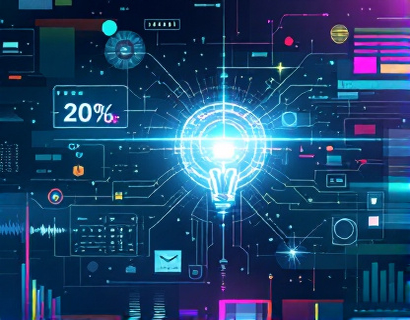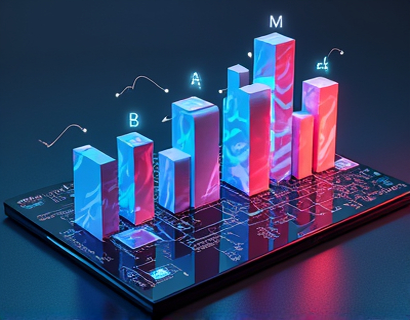Unlocking Enhanced Digital Experiences: The Synergy of Crypto and AI
The intersection of cryptocurrency and artificial intelligence (AI) is giving rise to a new era of digital innovation, transforming the way we interact with technology and each other. This fusion is not just about combining two advanced fields but creating a synergy that enhances user engagement, drives growth, and redefines connectivity in the tech ecosystem. As we delve into this topic, we will explore the transformative power of these technologies and their potential to set a new standard for digital interactions.
The Evolution of Cryptocurrency
Cryptocurrency, since its inception with Bitcoin in 2009, has evolved from a niche digital currency to a cornerstone of the modern financial system. Initially met with skepticism, cryptocurrencies have gained widespread acceptance, driven by their decentralized nature, security, and potential for financial inclusivity. Beyond being a medium of exchange, cryptocurrencies have become a platform for innovation, enabling the development of smart contracts, decentralized finance (DeFi), and non-fungible tokens (NFTs). These advancements have expanded the utility of cryptocurrencies far beyond simple transactions.
AI: The Intelligence Revolution
Artificial intelligence, on the other hand, has been transforming industries across the board, from healthcare and finance to entertainment and education. AI's ability to process vast amounts of data, learn from patterns, and make decisions autonomously has opened new possibilities for efficiency, personalization, and innovation. Machine learning, natural language processing, and computer vision are just a few of the AI subfields driving this revolution. When combined with the capabilities of blockchain and cryptocurrencies, AI can achieve even more profound impacts on digital experiences.
Enhanced Security Through Crypto and AI
One of the most significant benefits of integrating cryptocurrency and AI is enhanced security. Blockchain technology, the backbone of cryptocurrencies, provides a tamper-proof and transparent ledger for transactions. AI can further bolster security by detecting and mitigating threats in real-time. Machine learning algorithms can analyze patterns and identify anomalies, predicting and preventing fraudulent activities. This synergy ensures that digital interactions are not only secure but also trustworthy, fostering greater user confidence in crypto-based platforms and services.
Personalized User Experiences
AI's strength lies in its ability to personalize experiences based on individual preferences and behaviors. When applied to crypto-driven platforms, AI can analyze user data to offer tailored recommendations, enhancing engagement and satisfaction. For instance, a crypto exchange can use AI to suggest optimal trading strategies based on a user's historical data and market trends. This level of personalization not only improves user experience but also increases the likelihood of user retention and growth in the ecosystem.
Decentralized Applications (DApps)
Decentralized applications, or DApps, are a prime example of the fusion between cryptocurrency and AI. DApps leverage blockchain technology to operate without a central authority, ensuring transparency and security. AI can enhance DApps by providing intelligent functionalities, such as predictive analytics, automated decision-making, and enhanced user interfaces. For example, a decentralized gaming platform can use AI to create dynamic game environments and NPCs (non-player characters) that adapt to player behavior, offering a more immersive and engaging experience.
Smart Contracts and AI Automation
Smart contracts, self-executing contracts with the terms directly written into code, can be further empowered by AI. AI can automate the execution of smart contracts based on real-time data and conditions, reducing the need for intermediaries and increasing efficiency. For instance, in supply chain management, AI can monitor and verify the authenticity and quality of goods, triggering smart contracts to execute payments and other actions automatically. This integration streamlines processes, reduces costs, and enhances trust among parties.
Financial Inclusion and Accessibility
The combination of cryptocurrency and AI has the potential to drive financial inclusion and accessibility. AI-driven crypto platforms can provide financial services to underserved populations by lowering barriers to entry and reducing costs. For example, AI-powered credit scoring models can assess creditworthiness based on alternative data sources, enabling individuals without traditional credit histories to access loans and other financial products. This democratization of finance can empower millions, fostering economic growth and social equity.
Market Predictions and Trading
In the realm of crypto trading, AI can significantly enhance market predictions and decision-making. Machine learning algorithms can analyze vast amounts of market data, identifying trends and patterns that humans might miss. This capability allows traders to make more informed decisions, potentially increasing their returns. AI-driven trading bots can execute trades at optimal times, managing risks and maximizing profits. The integration of AI with crypto markets is revolutionizing the way traders approach the digital asset space.
User Interface and Experience (UI/UX) Innovations
The user interface and experience of crypto and AI-powered platforms are crucial for widespread adoption. AI can optimize UI/UX by analyzing user interactions and feedback, continuously improving the design and functionality of applications. For instance, AI can suggest layout changes, streamline navigation, and enhance accessibility features based on user behavior. This adaptive approach ensures that platforms are user-friendly and intuitive, reducing the learning curve and increasing user satisfaction.
Challenges and Considerations
While the fusion of cryptocurrency and AI offers numerous benefits, it also presents challenges that must be addressed. Regulatory uncertainties, technical complexities, and ethical concerns are among the key issues. Ensuring compliance with regulations while leveraging the full potential of these technologies is essential. Additionally, the computational resources required for AI and blockchain operations can be substantial, raising environmental and sustainability concerns. Addressing these challenges through responsible innovation and collaboration is crucial for the long-term success of this synergy.
Future Prospects
The future of crypto and AI is bright, with ongoing advancements promising even more transformative applications. The development of quantum computing, for instance, could revolutionize both fields by solving complex problems that are currently intractable. Quantum AI could enhance cryptographic security, optimize blockchain operations, and drive new forms of decentralized computing. As these technologies continue to evolve, the potential for enhanced digital experiences will only grow, reshaping the tech ecosystem in profound ways.
In conclusion, the integration of cryptocurrency and AI is not just a technological trend but a fundamental shift in how we interact with digital systems. By enhancing security, personalizing experiences, and driving innovation, this synergy is setting a new standard for digital interactions. As we move forward, embracing these advancements will be key to unlocking the full potential of the digital universe.










































